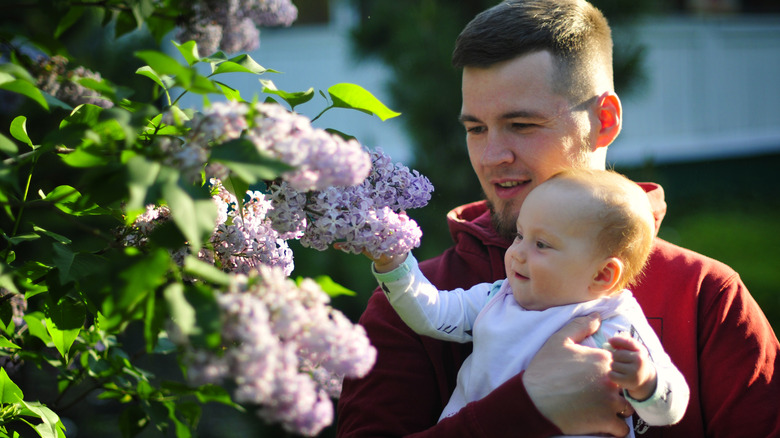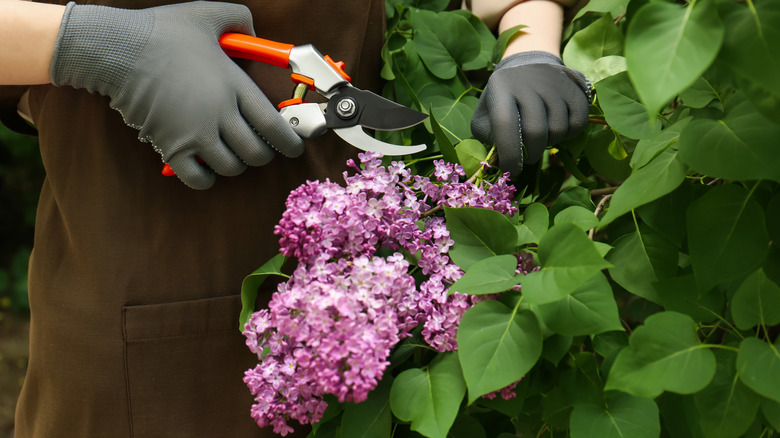Can You Root Lilac Cuttings In Water?
When lilacs open their fragrant flowers, it's nature's signal that summer's here. It's hard to have enough lilacs in our lives. Come late spring, this stunning flowering bush will turn your garden into a paradise for humans, birds, and pollinators alike.
Luckily for home gardeners, once a lilac shrub is well established, it can live for decades, sometimes even over a century. Propagating cuttings is an easy and nearly free way to add even more lilacs to your landscape. When done the right way, lilac cuttings should root; but is it possible to propagate them just water?
Possibly, but this method isn't as effective as propagating in a suitable mix, and it's generally not recommended. The best mix for starting cuttings includes potting soil, perlite, sand, and other moisture-holding growing media. So, save the water for moistening the growing medium and get a few new lilac plants going with the compilation of expert advice here.
Making the cuts for lilac propagation
There's a narrow window for making lilac cuttings, which is soon after you observe new growth emerging in spring. Depending on your climate, that period may start in May or early June and end in early July. However, it's not a bad idea to get a clearer time frame by contacting your local extension service. When you're ready, locate sections of new growth on your lilac plant; they're ready to be cut if the twigs are still flexible when bent slightly but will crack with a sharp bend.
The mistake most people make when propagating plants is using dirty tools that can infect the cutting, so brush away any dirt from your blades and wash them with soap and water before you begin. Make the cut right below a node (the place where leaves are attached to the stem) and be sure to clip several 8- to 10-inch pieces. Taking a few cuttings is wise in case some don't end up growing roots.
Remove any flowers and all but two or three of the topmost leaves. While it's not required, dipping the cut end of your lilac piece in a rooting hormone can help. Plant the cuttings in a potting medium in a container with good drainage. You can have a few cuttings in one pot, or a large quantity in nursery trays. Make sure a few of the nodes on each are submerged below the soil surface; this is where the roots will emerge. If you're starting multiple cuttings in one pot, arrange them so that their leaves don't touch each other.
Supervise your lilac cuttings
Immediately after planting, give the growing medium a good soaking and let it drain. Place the containers in a warm area (with temperatures between 65 to 75 degrees Fahrenheit) with bright, indirect light. The cuttings need a moist environment to grow roots, so it's a good idea to cover your pot or tray with a clear plastic cover or bag. Keep an eye on the encased cuttings. The medium needs to stay moist, and you'll have to refresh the air in the bag or under the cover by opening it up every few days.
After a week or two of regular check-ins, test the cuttings for roots. If the stems look healthy, give them a very light tug. If you feel resistance, the cutting has probably begun putting out roots. That said, most shrubs like lilacs take up to 8 weeks to root, so patience is key.
After about one month, carefully remove two or three of the cuttings to check on their root development. If they've put out a strong root system, they're ready for hardening and repotting. If not, tuck the cuttings back into the medium and keep them covered for a bit longer. Those sporting well-developed root systems should spend a few days without their plastic cover. After two or three days, plant these cuttings in regular potting soil. If you're reusing potting soil, take steps to sterilize it first. In the fall, you can plant your baby lilacs outdoors in a sunny spot with moist, well-draining soil.


